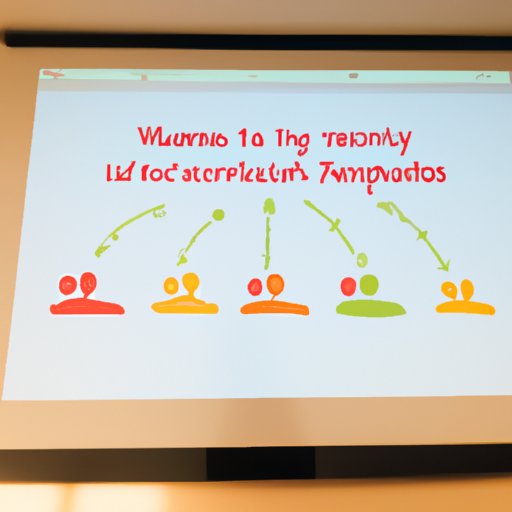Introduction
A restraining order is a court order that legally prohibits a person from engaging in certain activities or behaviors. The purpose of a restraining order is to protect an individual from harm or harassment. Restraining orders are issued by courts in the United States, and they are designed to keep an alleged abuser away from someone who has requested protection from them.
In this article, we will explore how long it takes to get a restraining order. We will explain the different types of restraining orders and the factors that impact how long it takes to get one. We will also discuss the role of the court in the process and analyze typical timelines for getting a restraining order. Finally, we will provide tips and strategies for speeding up the process.

Explaining the Different Types of Restraining Orders
There are three main types of restraining orders: domestic violence restraining orders, civil harassment restraining orders, and elder or dependent adult abuse restraining orders. Each type of restraining order is designed to address a specific situation.
Domestic Violence Restraining Orders
Domestic violence restraining orders are designed to protect individuals who are victims of domestic violence, such as physical or sexual abuse, stalking, or threats. These orders can be issued against a current or former spouse, cohabitant, or someone with whom you have had a dating relationship.
Civil Harassment Restraining Orders
Civil harassment restraining orders are designed to protect individuals from a wide range of behavior, including physical violence, threats, stalking, or harassment. These orders can be issued against anyone, including a neighbor, family member, or acquaintance.
Elder or Dependent Adult Abuse Restraining Orders
Elder or dependent adult abuse restraining orders are designed to protect elderly or dependent adults (age 65 and older) from abuse, neglect, or exploitation. These orders can be issued against a caretaker, family member, or any other person who may be causing harm or exploiting the elderly or dependent adult.
Highlighting the Factors that Impact How Long it Takes to Get a Restraining Order
The amount of time it takes to get a restraining order depends on several factors, including court availability, paperwork requirements, and the length of the hearing. These factors can vary from state to state and from case to case.
Court Availability
The amount of time it takes to get a restraining order may depend on the court’s availability. In some cases, the court may not be able to hear your case for several weeks or even months. This means that the process may take longer than expected.
Paperwork Requirements
Another factor that can affect how long it takes to get a restraining order is the paperwork requirements. You must complete and submit all necessary paperwork before the court can issue a restraining order. Depending on the type of restraining order, this paperwork can be quite extensive. This means that the process may take longer than expected.
Length of Hearing
The amount of time it takes to get a restraining order may also depend on the length of the hearing. Depending on the complexity of the case, the hearing may take anywhere from a few minutes to several hours. If the hearing is lengthy, the process may take longer than expected.
Examining the Role of the Court in the Process
When you file for a restraining order, the court plays an important role in the process. The court is responsible for filing the petition, notifying the respondent, and scheduling a hearing.
Filing the Petition
The first step in the process is to file a petition with the court. This document must include information about the petitioner, the respondent, and the reasons why a restraining order is needed. Once the petition is filed, the court will review it and determine if a restraining order should be issued.
Notification
Once the petition is filed, the court must notify the respondent of the restraining order. This is done through a process server or the sheriff’s office. The respondent must be notified of the restraining order before the hearing can take place.
Scheduling a Hearing
Once the respondent has been notified, the court will schedule a hearing. During the hearing, both parties will have the opportunity to present their case and the judge will decide whether or not to grant the restraining order.

Analyzing Typical Timelines for Getting a Restraining Order
The amount of time it takes to get a restraining order depends on several factors, including the type of restraining order and the complexity of the case. In general, there are three main types of restraining orders: emergency restraining orders, temporary restraining orders, and permanent restraining orders.
Obtaining an Emergency Restraining Order
An emergency restraining order is issued when there is an immediate threat of danger. In most cases, emergency restraining orders are granted within 24 hours. However, the amount of time it takes to get an emergency restraining order may vary depending on the court’s availability.
Temporary Restraining Order
A temporary restraining order is usually issued after a hearing. The amount of time it takes to get a temporary restraining order may depend on the court’s availability, the paperwork requirements, and the length of the hearing. In most cases, it takes approximately two to three weeks to get a temporary restraining order.
Permanent Restraining Order
A permanent restraining order is usually issued after a hearing. The amount of time it takes to get a permanent restraining order may depend on the court’s availability, the paperwork requirements, and the length of the hearing. In most cases, it takes approximately three to four weeks to get a permanent restraining order.

Discussing Tips and Strategies for Speeding Up the Process
If you need to get a restraining order quickly, there are a few tips and strategies that may help you speed up the process. These include making sure your paperwork is complete, requesting an expedited hearing, and working with an experienced attorney.
Making Sure Your Paperwork is Complete
Before filing your petition, make sure that all of the necessary paperwork is complete and accurate. This will help ensure that the process moves along quickly. Additionally, make sure that all of the paperwork is signed and dated correctly.
Requesting an Expedited Hearing
If you need to get a restraining order quickly, you can request an expedited hearing. This means that the court will try to accommodate your needs and hear your case as soon as possible. However, the court may not always be able to accommodate your request.
Working with an Experienced Attorney
If you need to get a restraining order quickly, it is a good idea to work with an experienced attorney. An experienced attorney can help you understand the process and navigate any legal issues that arise. Additionally, an experienced attorney may be able to help you expedite the process.
Conclusion
Getting a restraining order can be a complicated process, and the amount of time it takes to get one can vary depending on several factors. In general, it can take anywhere from 24 hours to several weeks to get a restraining order. To speed up the process, it is important to make sure your paperwork is complete, request an expedited hearing, and work with an experienced attorney.
Overall, getting a restraining order is an important step in protecting yourself from harm or harassment. It is important to understand the process and know what to expect. With the right approach, you can get a restraining order quickly and safely.
Takeaway Points
- Restraining orders are court orders designed to protect individuals from harm or harassment.
- The amount of time it takes to get a restraining order depends on several factors, including court availability, paperwork requirements, and the length of the hearing.
- To speed up the process, it is important to make sure your paperwork is complete, request an expedited hearing, and work with an experienced attorney.
(Note: Is this article not meeting your expectations? Do you have knowledge or insights to share? Unlock new opportunities and expand your reach by joining our authors team. Click Registration to join us and share your expertise with our readers.)
